#atla bumi
Text
Do you guys think that if Aang scaped the Air Nomads genocide and didn't get trapped in an iceberg for 100 years, his Avatar team could have been kid Bumi, Kuzon and maybe a young master Pakku or a young Hama?
#avatar series#avatar the last airbender#aang#avatar aang#team avatar#atla aang#atla au#atla#atla bumi#atla hama#atla kuzon#atla headcanons#atla pakku
54 notes
·
View notes
Text
There is so much discourse over the Netflix Live Action, and a lot of it I find annoying BUT one of the main ones for me is people going on about the natla writing by claiming that they are "telling" more than "showing". Yet, in the same post, they are missing the point of some of the interactions between the characters by focusing only on the told instead of the complexity hidden between the lines in many cases. These actors are actually amazing. I'm beyond impressed with all of them tbh. But let me explain what I'm talking about with one example. There are so damn many, but I'm just going to point out one right now.
I see a lot of people's takes on the Natla Bumi as a grown man taking his anger out on a child and being extremely ooc, which shows that these people are only focusing on the obvious and- to channel Kakashi from Naruto- not looking beneath the underneath. While natla Bumi is different than the OG show, I personally like this version of Bumi. He feels more "real" while still feeling like Bumi. He is angry. He is angry and hurt to discover that it was his close friend who had been the Avatar. The Avatar that disappeared. The Avatar that ran and hid and let the war happen. People have to realize that this interaction is how Bumi finds out not only that his childhood friend that he thought was murdered all those years ago was alive this whole time, but that it was he who had the power to stop all of the terrible things that had happened since from happening. Of course, he is mad. Mad and hurt. He likely feels abandoned by his friend as well.
He is all of those things, but I feel like people are missing what else is going on.
Bumi was also trying to force Aang, who was a child of only 12, to realize what it would mean to be the Avatar that the world needed at that moment in time after 100 years of war. He is doing it from a place of hurt and anger and tiredness, and absolutely handling it the wrong way. BUT this Natla Bumi is way more believable as a real person than the exaggeratedly goofy and cartoonish character was in the OG.
Bumi in the Netflix Live Action was trying to teach Aang: "This is what it means to be the Avatar. This is the kind of hard choices you will have to make- that the world needs you to make." He clearly realized that his friend was essentially frozen in time. A fact that is alluded to when he asks him how he remained unchanged all these years. Bumi already knows the truth and is teasing him to hint that he is aware. This is disguised as a taunt because they are not alone in the room, and because the White Lotus is all about subtle messages to get their point across. I mean, they use pai sho to send messages for crying out loud, but I digress.
The point is that he knows Aang is still the same kid he knew all those years ago. He knows Aang is not ready to be what the world needs right at that moment. He knows Aang is still too innocent and idealistic. He might be acting mean to Aang, but let's not forget Bumi is in the White Lotus, and know he is not being mean without reason. He knows what he is doing and hopes that by trying to force Aang to "wake up" and see the reality of the world and his role, maybe Aang will be better prepared for what must come. The scene with the roof collapsing and Bumi trying to make Aang choose who to save just exacerbates this lesson. That clearly reads as him trying to get Aang to push himself, perhaps to the use of the Avatar state, but if nothing else, to the point of hardening enough with resolve needed to face the difficult choices that Bumi (& everyone else) knows must be made. IE Aang must kill the Fire Lord to end this war. After all, energy bending is not known, remember? The death of the Fire Lord by the hands of the Avatar is the only way the war can end, and Bumi, King of Omashu and White Lotus member, knows this. Just as he knows sweet and innocent Aang of his childhood is not ready to be the battle harden Avatar the world needs, but he has to be. Thus, Bumi tries to push Aang into that readiness in a way he thinks is right.
And, let's not forget how OG Bumi put creeping crystal on 2 kids and let it slowly grow to the point of almost suffocating them. But no one questions that OG Bumi was always good and that he was trying to teach Aang a lesson in the original show, and never intended to let Katara and Sokka be suffocated to death. Right? Right.
Of course, in the end, in the Netflix Live Action, Aang is the one teaching Bumi the lesson. The lesson that the Avatar doesn't have to do this task alone. Bumi had seen so much in his years that he forgot what it meant to have a friend at your side to face things with, and that is what we watch Aang remind him of.
In sum, people watch the OG characters do some of the same things that they are mad about in the Netflix LA, and yet they give the OG characters the benefit of the doubt that it was meant well while demonizing the NATLA version for doing essentially the same kind of thing. So either people's watching literacy has decayed since the OG show
OR
People are so dead set on hating on the Live Action and any other adaptation, and it never actually mattered how much was put into it because they are always going to find something to hate about it.
And people wonder why we haven't been given more ATLA content... 🙄
49 notes
·
View notes
Text
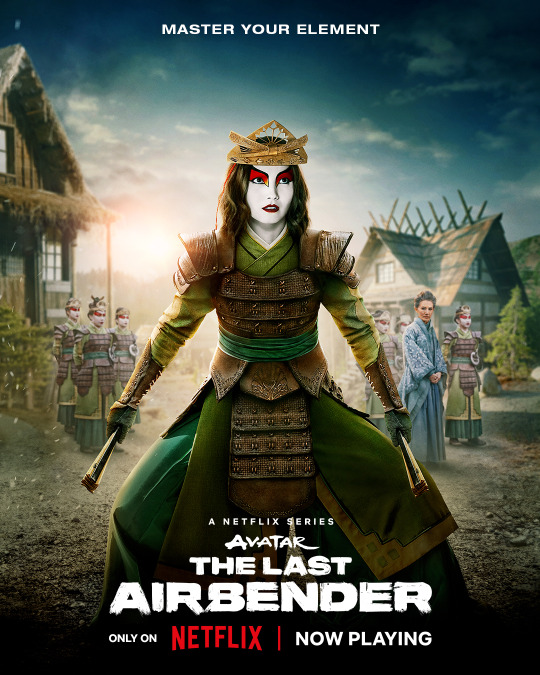


New ATLA Netflix Posters
19 notes
·
View notes
Text
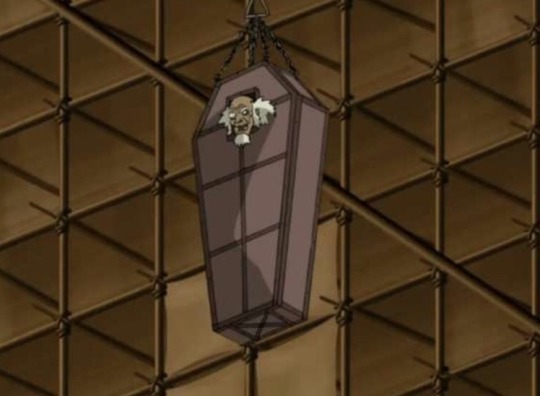
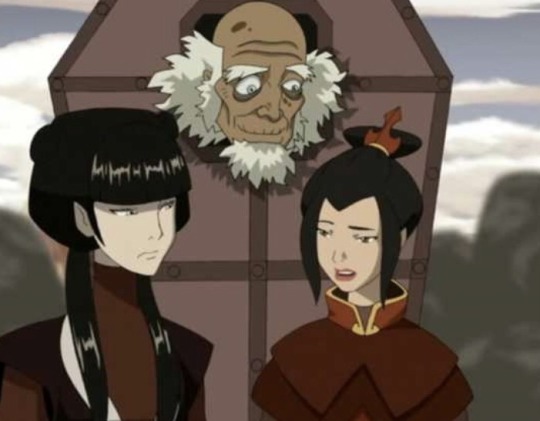

#avatar: the last airbender#avatar the last airbender#s2#2x03#rewatch#bumi#atla bumi#mai#atla mai#atla azula#princess azula#azula
21 notes
·
View notes
Text
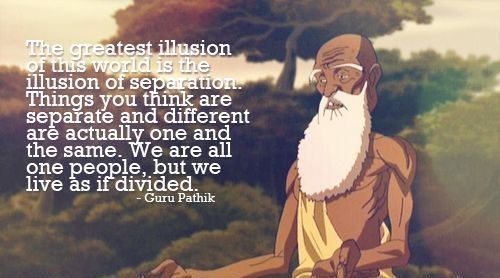
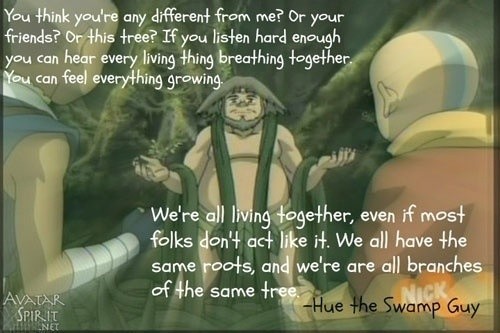

Couple of random personal fav quotes from the show ❤️
#i take them very seriously btw#atla#avatar#avatar the last airbender#atla bumi#guru pathik#atla hue#avatar fandom
18 notes
·
View notes
Note
More avatar Kanna au please? I really love how you write Kanna!
Continued from: [Link], [Link], [Link], [Link], [Link], [Link], [Link], [Link], and [Link].
1. There is no escaping the reality that they have to leave Kunzang's room and start the day. They can't stay holed up there forever. They have no idea what Bumi might do if they try. The first thing Hama and Kanna do is head to their own rooms, to collect themselves, to have a moment of privacy, to give Kunzang a moment of privacy. But when Kanna steps inside, an unwelcome surprise is waiting for her: an invitation to dine with King Bumi that morning. With some trepidation, she shows it to Hama and Kunzang, and asks if they got one. They did not. Whatever Bumi has planned, it's for her alone.
2. She trudges to the cozily appointed little morning room that Bumi takes breakfast in. It has high windows and skylights, that send sunlight pouring in, without ever letting Kanna forget she is in a fortress palace. It makes her feel as if she were in a deep hole in the ground, looking up at the sky, with no way out. She doesn't know how Bumi can stand it, with all these defenses around, just opening the door and letting Prince Iroh of the Fire Nation in. By the time she has reached her destination, the worry that Iroh might be waiting for her on the other side of the door has shifted to a cold knot of certainty and dread. Which of course means it's a pleasant surprise when she is ushered in to find king Bumi alone.
3. Alone he might be, but unarmed, mentally or otherwise, he never is. Kanna sits down from a cushion across from him and serves herself some of the royal bounty spread in front of her (a definite perk of sharing a table with a king) and waits for what he has planned. It feels like a joke, a particularly nasty joke. They thought they wod be safe here. Bumi grins at her. Her stomach clenches. "I wanted to tell you I'm sorry I sprung Iroh on you, but to be fair, you sprung yourself on me."
4. Kanna glares. She spent all night comforting a man panicking because men like Iroh had killed his family and kept him in hiding hie whole life. But Bumi's grin only turns into a smile. It doesn't go away. "But you know what," he tells her. "You are the Avatar. You have a job to do. You have to bring balance to the world. Have you thought about who is going to rule the Fire Nation in your new balance?"
5. Kanna hadn't really. She hadn't really thought about what the world would look like after her victory, should it come. This, Bumi tells her, is the hardest part about winning a war. After the war is won, the real work of rebuilding, and making a lasting peace begins. And if she doesn't want a new war every five minutes, she will have to resign herself to working with Iroh, or people like him. And after all, Bumi's been doing it for years. Bit how, Kanna asks, is she supposed to work with him when he believes the Fire Nation conquest is right and good? He can learn better, Bumi tells her. He already is, a little. She has to open her mind to the possibilities, including the possibility of people changing.
6. Kanna leaves tired, defeated, her righteous anger drained away, and heads off to find Prince Iroh, in the room he uses for Firebending practice when he is here, another stone room full of sunlight pouring down, as if it were a hole in the ground.
#avatar the last airbender#atla kanna#atla bumi#uncle iroh#atla hama#posts i created#do you want to ask a question it doesn't have to be a question#five headcanons#i ship iroh/tea
12 notes
·
View notes
Text
Everything at Once by Lenka
#avatar the last airbender#atla#atla aang#atla sokka#atla toph#atla katara#atla zuko#atla mai#atla ty lee#atla suki#atla iroh#atla piando#atla azula#atla bumi#atla blue spirit#avatar aang#toph beifong#katara#zuko#mai#ty lee#suki#iroh#piando#azula#bumi#blue spirit#a little bit of#aanglove
16 notes
·
View notes
Text
AtLA Analysis: S1E5: The King of Omashu
Intro: Didn’t do one of these on the weekend, and since I went to and left work early I decided I could do it now. I *should* be working to sort out my future housing situation (dumbass past me for buying a contract when I hadn’t sold my current one yet ;-;) but I don’t want to do that so I’m doing this instead. Let’s get started, shall we? And let’s see if I can focus better this time around, since I’m starting at 5:30pm instead of 7:30 pm lol
So, the ‘Previously’ section is all about Aang being the Avatar: showing him in the Avatar state, the declaration on Kyoshi island, the reactions of the monks of different nations, as well as a little bit about the Airbenders being gone. Tying into the later trials and Aang trying to prove himself to Bumi?
Okay, so: The first glimpse of Omashu tells you a few things. Number one, walled city on top of a tall and steep mountain--extremely good for defense, and maybe a sign of earthbending, probably by several hundred (or thousand) benders working in concert, if it wasn’t a natural formation. Those walls holding everything up are definitely some powerful earthbending and serious building. However, despite its strategic location, it doesn’t have a lot of (or any) room to grow size-wise, which will likely make for crowded neighborhoods among the poor and working-class, if not the middle class as well, and possibly a lot of underground housing and businesses.
Sokka: “They have buildings that don’t melt!” This seems...odd, because when Aang wakes up it looks like the South Pole is in the middle of polar summer--sun’s always up, and therefore the air would be hotter, which means that if anything is going to melt it would be then. And yet the village seemed in no danger of any of that when we saw it.
What’s with Katara and Sokka’s coats? They’ve been wearing them for most of the time in these past episodes, and they’re continuing to wear them here. Does that mean they’re still in colder climates? Kyoshi certainly seemed to be a colder place, with the coats the civilians tended to wear and the undeniably thick fabric of the Kyoshi warriors’ dresses.
So Aang’s wearing the wig and mustache as a disguise, but doesn’t bother to change his clothes? ...does he not have any other clothes?
The first appearance of the Cabbage Merchant! Ironically enough, him losing his cabbages isn’t the Gaang’s fault at all, but that of the guards who accuse his cabbages of being rotten.
Lemme just take a moment to be impressed by a) Aang’s impression of an intimidating “old timer” and b) Katara’s immediate memorization and usage of such a long and ridiculous last name with no prep whatsoever. Though the usage of a last name is odd, and might actually weaken their disguise: of all the characters we know, the only ones I can think of with actual family names are the Beifongs, which, if we take that at face value, would imply that the only people with last names are EK nobility. (Zhao is actually a family name, but we don’t get any other name for him in the series.) None of them are dressed in EK colors, and they have no guards with them, which would be probably seen as strange for an upper class family, especially one with an elder and a young woman. Obviously they just made this up on the fly, and it gets them in, but still.
The guard who stops Sokka to tell him to carry “his grandfather’s” bag--is he big on tradition? Does he care a lot about family and filial duties? It’s not a lot of character, but it’s there. (Sokka was also clearly nervous about the disguise, so he must have seen some of its weaknesses too.)
I love how nobody on the other side of the gate reacts to Momo sitting in Aang’s wig, and even the guard who gasps doesn’t say anything. Do they not recognize the flying lemur? How common are flying lemurs and in what habitats? The last episode led me to believe that they only lived in Air Temples, but is that not true? Are the other characters simply mistaking it for a different, local species? Or is it simply that no one cares enough, or thinks it would be awkward to ask?
I wonder what kind of coordination and bureaucracy goes into the mail system.
So, Aang has friends all over the world, right? But he lives at the Air Temples? When did he visit the Earth Kingdom? The Fire Nation? Did he ever visit the Water Tribes? (I think no on that last one.) Who did he have with him, Gyatso or peers his age or any others? Did he go alone?
That ride. Caused. So much chaos. I feel for the overworked mail officials who had to clean up the mess. Also Aang’s mustache and wig are ridiculously stable, apparently. Like glued-onto-his-head, until it’s not. Huh.
I wonder if they’re also going to connect all the damage to the roofing to their crazy ride. What is the green stuff underneath those shingles? What are the roofs made of to withstand that kind of weight and force? I mean, they broke through a stone wall, so why didn’t they break through the roofs?
I get that your entire livelihood was destroyed, Cabbage Merchant, but killing is not the answer here. You’ve got to extort them of all their resources!
Odd justice system you’ve got here in Omashu. Does the king really handle all criminal judgements? That can’t be good for public order, considering just the sheer overwork that would likely put on the man, much less Bumi’s chaotic nature.
...Bumi is actually, literally, biologically 112 years old. He...looks good for his age. And he’s Aang’s last surviving friend, most likely, his only living tie to the past.
So, the ‘refurbished’ chamber has three beds, nice ones it looks like (if angular), hammock-like green hangings (are they decorative or do they serve a purpose? Storage? Actual hammocks?), and green crystal lights. What about the crystal is providing that light? It can’t be fire, that would have run out of oxygen, and it can’t be anything living for the same purpose. And, of course, air vents, because we can’t have our protagonists asphyxiating.
Also: beds in the middle of the room. That has to be an intimidation tactic. Who can sleep in a bed in the middle of the room?
So, the guards managed to take Katara and Sokka without waking Aang up (who slept without a blanket, cultural norms?) despite the fact that he later woke up to the sound of the guard earthbending his wall, which was established to be the only way in or out of the cell. Probably difference in timing and where he is the sleep cycle.
Creeping crystal, aka genamite, aka rock candy apparently? Clearly violating the law of conservation of mass, not to mention the way it glows before it grows, but it still makes me curious as to its physical properties.
On a similar tack, where does the dye come from for these clothes? Water Tribe clothing is a bright blue, Earth Kingdom clothing is green, Air Nomad clothes are mostly yellow with orange accents, and Fire Nation clothing is all dark reds and black. I know the show is employing color coding for these nations for its viewers, but what in-universe explanation would there be for such color coding? The Water Tribe is likely the hardest to explain, since there are no plants around (that we can see) to get dye from and color their clothes. Also, Bumi’s outfit is a purple version of the clothing he was wearing the day before, and where did the makers of that get the purple dye? I believe it’s the only purple clothing we see in the whole series.
Another related note: The color scheme for the scenes in Bumi’s palace and in the cave for the first trial is all dark green and black, not quite threatening but not something that puts you at ease. It really enhances Bumi’s dangerous, off-kilter vibe.
All of these challenges are meant to bring out Aang’s quick thinking and inventiveness. I keep thinking of Toph’s later training, telling him that he has to be stubborn, that ‘there is no other angle,’ while here there are lots of angles and he has to find the one that works. Almost like a clash of philosophies. Bumi’s method, at least, certainly plays to his strengths (and Bumi’s strengths), because inventiveness and quick thinking are some of Aang’s better qualities.
The first challenge--nice aim, Aang. That’s impressive. Airbender skills?
The second challenge--thinking outside the box again, and realizing that of course an insane king would have the nontraditional pet. And yet again, Aang shows that he’ll chase after cute animals without thought to their comfort or safety. It also has a lighter green color scheme then the last several minutes.
I’m not sure we’ll be getting a lot of Sokka or Katara this episode. It’s almost all focused on Aang and King Bumi.
The third challenge: instead of a green color scheme, it’s rusty earthy brownish red. An allusion to the more direct fight that’ll take place? Also, I wonder the histories of the two bladed champions Bumi summons.
(I’ve been getting distracted by listing to “Insane” by Black Gryph0n and Baasik, about Alastor from Hazbin Hotel. A little bit gory for AtLA, but possibly fitting for Bumi lol)
Bumi calls himself ‘the most powerful earthbender you’ll ever see.” Toph’s calling, she wants her title back
The rings on Bumi’s fingers intrigue me. What are the spheres attached to them? What are their purpose? Is it just to show off wealth? If it was, why wouldn’t it be gemstones instead? These just look like little painted clay balls.
The fighting tactics: Aang avoids and evades, and also redirects, using the enemy’s force and attacks against them. Bumi attacks head on, but is clever and inventive about how.
“You only have a few minutes,” Bumi says, despite the fact that their faces are still uncovered, even Sokka’s, who has crystal growing up past his head. Also, Sokka’s Rocky suggestion--is that a genuine suggestion, or is it an attempt to lighten the mood? The others treat it as genuine but who knows?
Aang’s quick to forgive Bumi when he realizes who he is. Possibly because of his easygoing personality, possibly because it’s his last living tie to his past, probably a mixture of both. Honestly, given the context, it’s surprising he isn’t more emotional about this.
This is the first time we hear Ozai’s name, and it’s from Bumi’s mouth.
And the Cabbage Merchant’s cabbages are destroyed for the third time that episode. RIP.
And that’s all of it! Definitely didn’t take as long as the last couple, probably because I had the energy to go through it all in one go. I also think this one is shorter, and I didn’t put everything that went through my head down as I went, so there’s that. Not a lot of Sokka or Katara, as I thought. This was focused on Aang, and on Bumi. I do have some worldbuilding questions about Omashu though. All in all, fun episode!
#atla meta#atla analysis#s1e5 the king of omashu#atla#atla bumi#king bumi#atla aang#aang#atla sokka#sokka#atla katara#katara#bumi#atla toph#toph#because i mention her several times#cabbage merchant#atla cabbage merchant
5 notes
·
View notes
Text

I could be a good mother
#atla#Katara#i love her sm#bumi#kya#Ik she was such good mom#eueueueueu#i love the kataang kids#fanart#atla fanart#kataang
12K notes
·
View notes
Text

katara (:
#and bumi technically#he’s just chillin#katara#kataang#(implied)#atla#my art#avatar: tla#avatar: the last airbender#avatar#katara atla
7K notes
·
View notes
Text


This.
The aang and kataang renaissance is the funniest thing of 2024
The haters always get crazily ratioed 👀
6K notes
·
View notes
Text

who should i add to the giant group pic?
the silly little cats have gotten out of hand, i love them so much
(for the rest just search the catla tag on my blog)
#CATLA#art#atla fanart#avatar the last airbender#but make them cats#them right now: from left to right#mean girl trio:#mei#tai li#zuzu 1#azula#the gaang#suki#sokka#katara#aang#zuzu 2#zuko#toph#momo and appa#white lotus squad:#uncle iroh#king bumi
1K notes
·
View notes
Text
katara (to bumi): what do we say to drugs and alcohol?
bumi: no
zuko (to izumi): what do we say to war crimes and genocide
izumi: no
toph (to lin): what do we say to illegal bending arenas?
lin: *sighs* get mom tickets
toph: thats my girl
katara: NO
#atla#atla headcanons#avatar#avatar the last airbender#katara#zuko#toph#the gaang#adult gaang#bumi ii#izumi atla#lin beifong
1K notes
·
View notes
Text

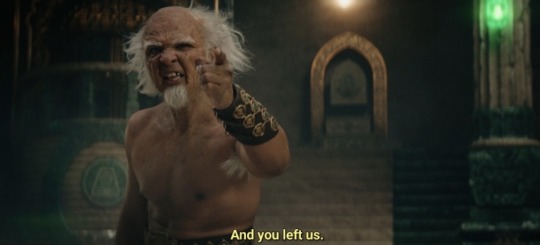

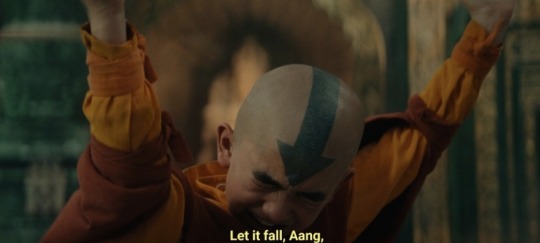
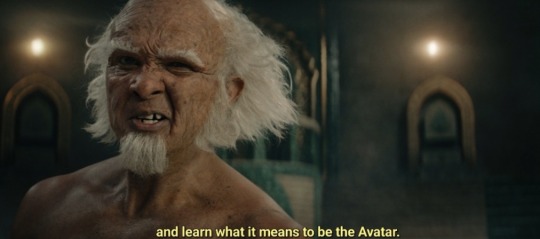
#avatar netflix#avatar live action#avatar the last airbender#avatar: the last airbender#s1#1x04#spoilers#aang#avatar aang#bumi#atla bumi
16 notes
·
View notes
Text
Headcanon: When he hits his teenage years, Aang starts fucking with his friends by making up all sorts of wild stuff that totally happened 100 years ago. Toph always says "he's not lying", but at this point the Gaang knows that The Gremlin Supports Lying For Fun, so Aang always suggests going to Bumi to confirm whatever bullshit he's spewing this time. And he always does.
The Gaang figures that Aang must be somehow coordinating this with Bumi, because no matter how absurd the lie is, Bumi is always 100% on board and can elaborate on it seamlessly. They keep trying to find out how Aang and Bumi are coordinating the lies, going so far as to intercept Aang's letters to Bumi to check for secret codes, but they can never find anything.
And the truth is that they're not coordinating. Bumi just rolls with whatever Aang comes up with because it's hilarious and Aang is his buddy.
2K notes
·
View notes
Text
ATLA The Older Generations Textposts



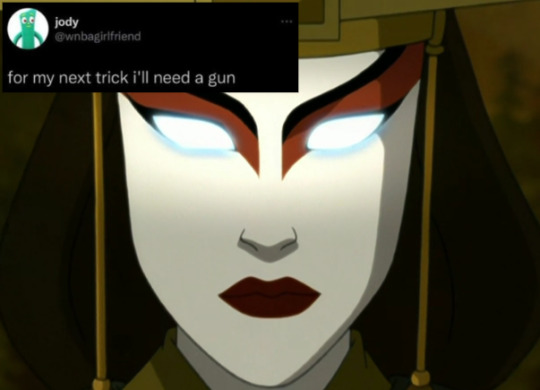
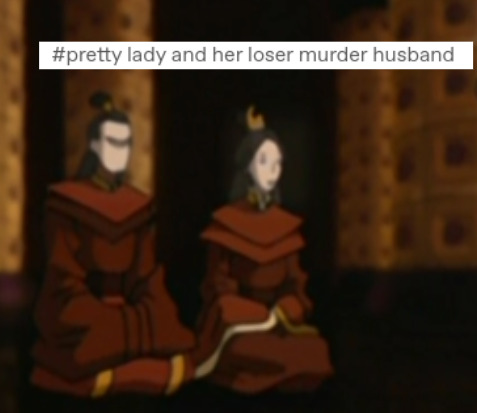


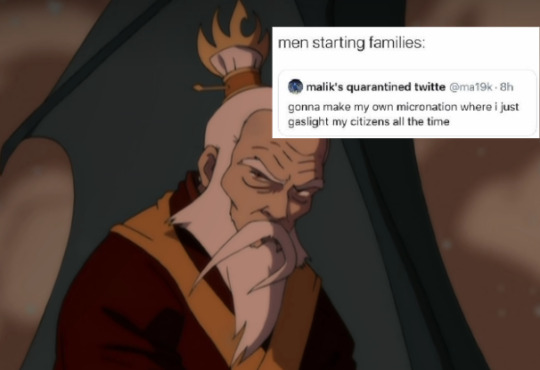

#atla#avatar the last airbender#atla textposts#texposts#texpost#bumi#king bumi#ozai#fire lord ozai#iroh#uncle iroh#kyoshi#avatar kyoshi#ursa#firelady ursa#kuruk#avatar kuruk#jeong jeong#sozin#fire lord sozin#hama#holy crap thats a lot of tags
1K notes
·
View notes